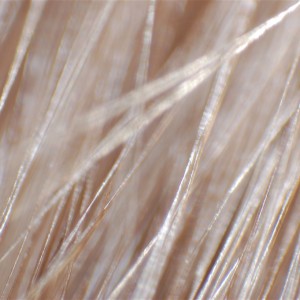
Just as there are many reasons for hair loss, there are also many conditions which result in abnormal hair growth. In general, the less common a specific condition, the fewer the resources and information related to the disease. Moreover there are a plethora of examples of these rare hair disorders, including pili annulati.
Pili annulati is a rare hair disorder also known as ringed hair, after the cosmetic appearance of the condition. During progression of pili annulati, as the hair strand grows, abnormal spaces are created1. Light reflects off of these spaces differently than properly formed portions of hair, making affected areas appear a different colour1. The final result is alternating light and dark sections along the hair strand, generating the ringed appearance1.
Pili annulati is generally restricted to scalp hair and leads to slower hair growth2, although fragility does not seem to be an issue1. It is a genetic disorder which can be inherited3 and is more noticeable in individuals with lighter hair. Therefore although the condition is present from infancy, it becomes more evident in later years as the hair whitens1. A coincidental link to other hair disorders such as alopecia areata has also been established1,4,5.
Fortunately, treatment is fairly simple and strait forward. The ringed look can be masked with appropriately coloured hair dye and is thus an effective treatment1. In one documented case, therapy with traditional minoxidil and systemic steroids led to a disruption in the condition and resulted in regrowth of normal hair5.
Overall, although rare, pili annulati is one more cause for abnormal hair growth.
Article by: Dr. J.L. Carviel, PhD, Mediprobe Research Inc.
References
- Moffitt DL, Lear JT, de Berker DA, Peachey RD. Pili annulati coincident with alopecia areata. Pediatr Dermatol 1998;15:271–3.
- Dawber R. Investigations of a family with pili annulati associated with blue naevi. Trans St Johns Hosp Dermatol Soc 1972;58:51–8.
- Selvåg E. [Structural abnormalities of the hair shaft]. Tidsskr Den Nor Lægeforen Tidsskr Prakt Med Ny Række 1996;116:965–7.
- Price VH, Thomas RS, Jones FT. Pili annulati. Optical and electron microscopic studies. Arch Dermatol 1968;98:640–7.
- Smith SR, Kirkpatrick RC, Kerr JH, Mezebich D. Alopecia areata in a patient with pili annulati. J Am Acad Dermatol 1995;32:816–8.












